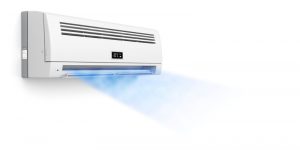 Have you been weighing the options between the traditional ducts and ductless? If you’ve been doing your research, you’ve most likely heard countless good things about ductless AC systems. However, that information will be mostly about energy savings and their effectiveness in winter.
Have you been weighing the options between the traditional ducts and ductless? If you’ve been doing your research, you’ve most likely heard countless good things about ductless AC systems. However, that information will be mostly about energy savings and their effectiveness in winter.
It’s less common to find information about indoor air quality. This is a problem, because if indoor air quality is a big concern for you as a homeowner, then you might be surprised to find that the traditional advice about air quality doesn’t always apply to ductless systems.
No Ducts, No Dust
The best thing about ductless systems is that they don’t use ducts! For indoor air quality, this is a good thing.
After a few years of use, ducts can become full of dust. With the right amount of humidity, that dust can encourage the growth of mold. This requires them to be cleaned every few years.
Not just that, but the ducts will pick up air from other rooms and distribute it through the home. Pet dander, chemical contaminants, and allergens can all be circulated through the ductwork. This also means that any leaks or disconnects in the ductwork can pull in dirty air from the attic or crawlspace.
But No Ducts = No Whole-House Products
But that doesn’t mean duct systems are completely flawed. In fact, there are many indoor air quality solutions that only work with duct systems.
Air Purifiers and Filters
If you or a family member suffers from seasonal allergy or asthma symptoms, one way to alleviate their suffering is with air filters or air purifiers. These can reduce 99% of contaminants, ranging from pet dander, dust, dirt, and chemicals. Plus, with the use of UV lights, they can even stop germs and viruses in their tracks. However, these devices do require a duct system.
But for a ductless system, each room is contained, meaning the air quality issues in one room won’t be circulated to the rest of the home. This makes indoor air quality far easier to manage without having to compromise other rooms in the house.
Humidifiers and Dehumidifiers
Most of us have seen the portable versions of humidifiers and dehumidifiers and know that they come with a few flaws. The whole-house versions of these devices do a great job remedying these flaws, absorbing and distributing moisture without manual assistance while integrating with your thermostat. But again, these options are not available for a system without ducts.
However, this isn’t as bad as it sounds when you consider one of the main strengths of duct systems: that they’re only meant to cool or heat the rooms that you’re using. If you installed a ductless system because you only need air in two of your rooms for 10 months out of the year, then it won’t be so unreasonable to take out the portable devices when you need them. The alternative would be controlling the humidity for more rooms than you’re using.







